The 15 DC Animated Movies You Need To Watch
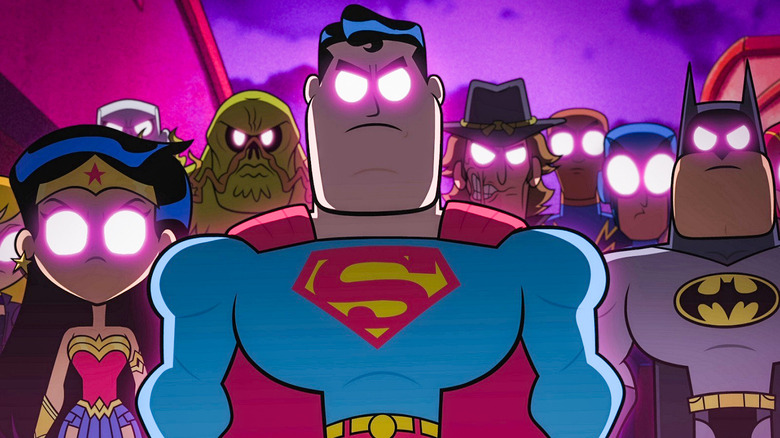
Whereas Marvel has triumphed magnificently over DC in terms of live-action movies, the California-based comics giant has always prevailed when it comes to animated output. With the success of the Spider-verse and "What If...?" projects the tide may well be turning, but ever since the "Batman: The Animated Series" feature-length spin-off "Mask of the Phantasm" was released in 1993, there has been a regular stream of good, quality material emerging from the DC stable.
It'd be churlish to deny there haven't been absolute stinkers as well, but hopefully in the following article we can at least attempt to guide you towards the best DC animated movies on offer. It's no coincidence that a great many of the entries in this list are heavily based on already successful comic storylines, and they let the source material shine. After all, the best animation in the world can't make a bad story good.
Batman: Year One
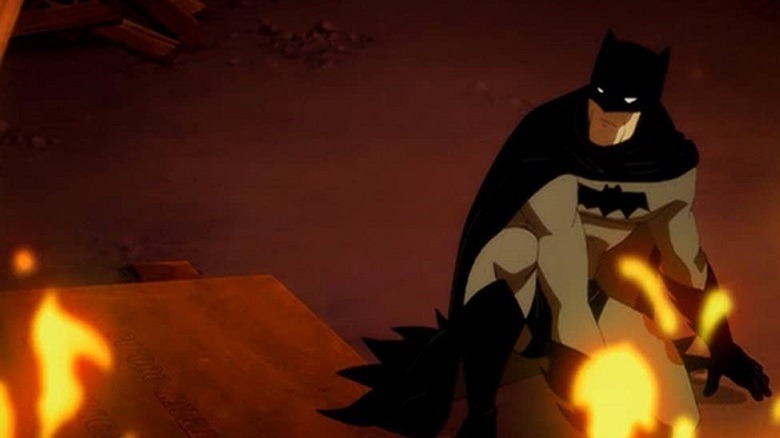
As much a tale of Lieutenant James Gordon as it is of the Dark Knight, "Batman: Year One" sees a young Bruce Wayne returning to Gotham in the midst of a crime epidemic, finding his city under the corrupt grip of bent police officers and mob boss Carmine Falcone. Inspired to take the mantle of the Bat for the first time, Bruce realizes he has an unlikely ally –- and perhaps friend -- in the stoic and incorruptible James Gordon.
A faithful adaption of the original Frank Miller comics, "Year One" was nearly shot as a film by Darren Aronofsky, until being abandoned in favor of Christopher Nolan's "Batman Begins." It's interesting to see how much of the plot of Miller's original still remains in Nolan's first superhero movie.
"Batman: Year One" is far from perfect. It treads old and familiar ground (DC animators must surely be bored of working on the death of Bruce's parents by now), and some of the voice work (barring the ever-reliable Bryan Cranston as Gordon) is below par. But at a running time of just over an hour it's a pacey, spirited, and distinctive introduction to the animated exploits of the Caped Crusader.
All-Star Superman
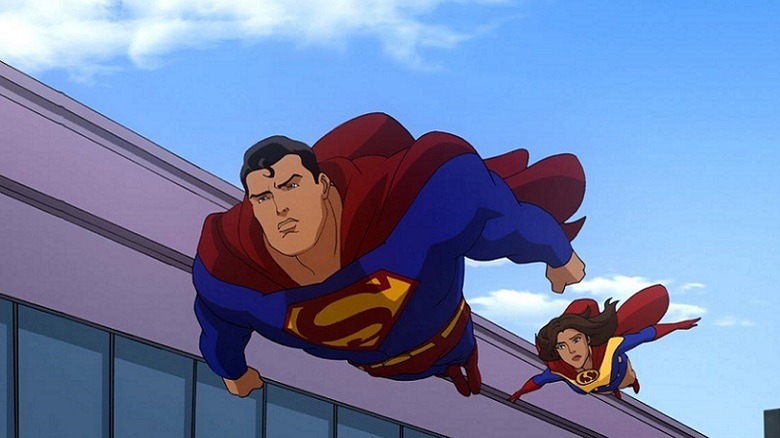
Created by DC's own super-team of Grant Morrison and Frank Quitely, "All-Star Superman" was a 12-issue mini-series from 2005. In it, Morrison attempted to reinterpret Superman mythology freed from DC continuity, creating an ambitious and optimistic epic that's often regarded as one of the best comic series of all time. Like the fevered interest surrounding "Watchmen," any adaptation would struggle to meet that weight of expectation, but "All-Star Superman" does a very reasonable job of doing just that.
Superman, fatally poisoned by solar radiation, seeks to get his affairs in order before the end of his long and fruitful life. It's a chaotic quest that'll see Lois Lane given superpowers, an attack on Metropolis from sentient talking dinosaurs, meetings with lost Kryptonian astronauts, and the Man of Steel solving the riddle of the Ultra-Sphinx.
It's as insane as it sounds, with Grant Morrison's already over-frenzied imagination given full reign. As a result, the pacing does struggle a little and at times it resembles a series of unconnected set pieces, but it's worth it to see this dramatic and original take on our favorite son of Krypton. It's just a shame it never got the two-part treatment like some other entries on this list.
Batman: The Dark Knight Returns - Part One And Two
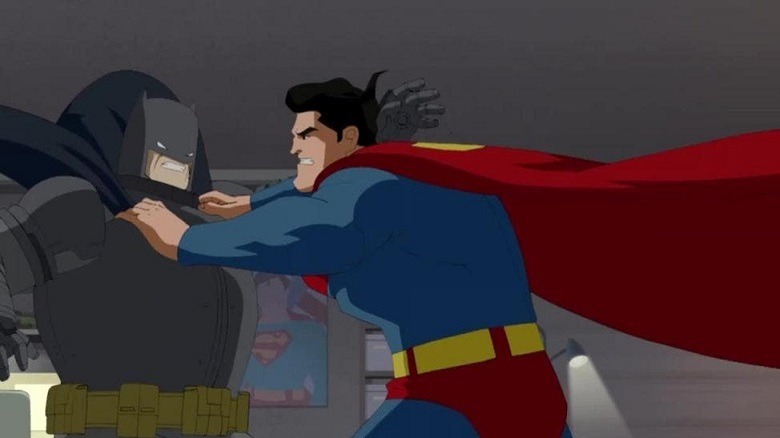
Based on the groundbreaking comic series almost single-handedly responsible for reviving the comic medium, "Batman: The Dark Knight Returns" is an epic two-part tale about Batman returning from retirement as a terrifying new force for vengeance in a dystopian Gotham. Having hung up the cowl after the death of his sidekick, Robin, Batman must remind the city who he is and bring justice no matter what -- even at the expense of one of his oldest friendships.
Culminating in an epic battle against Superman -- now reduced to a flag-draped American political pawn -- the plot of Zack Snyder's "Batman v Superman: Dawn of Justice" is essentially the last act of the second part of this standout animated movie, although it's arguably better handled here.
DC Universe Animated Original Movies can often be accused of varying dramatically in animation style and quality, but it's refreshing to see that the very distinctive visual style of Frank Miller's work on the comic series is lavishly replicated in "Batman: The Dark Knight Returns." Batman is a hulking, muscled behemoth, looking more demonic than his already monstrous foes, and tooled up with paramilitary gadgets. Long gone are the days of Shark Repellent Bat Spray.
Justice League Dark
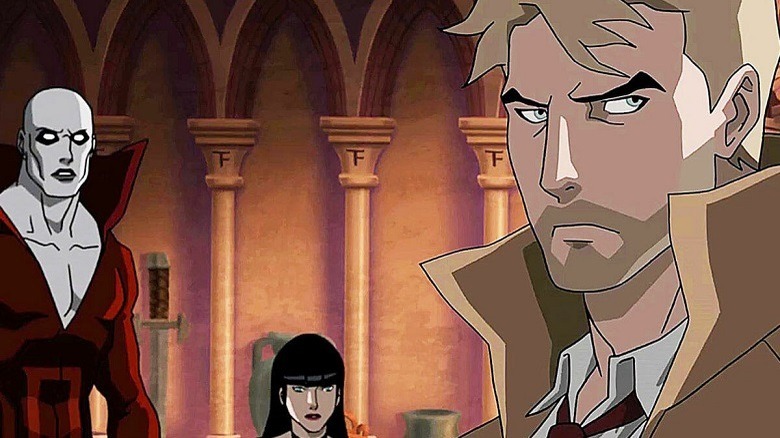
For those disappointed by the cancellation of the "Constantine" TV series, the return of Matt Ryan as the haunted scouse sorcerer in "Justice League Dark" was a welcome relief. When law-abiding citizens start killing people, convinced their victims are demonic monsters, Batman is forced to investigate. With the aid of John Constantine, he begins recruiting members for a new Justice League -- one better equipped to deal with threats of a supernatural nature.
Involving many of the magical characters from DC comics extensive roster -– Constantine, Zatanna, Etrigan, Black Orchid, et al –- the team is a far cry from the unquestioning heroism of the regular JLA, and therein lies the fun. The members of the paranormal Justice League are broken and damaged individuals. As their school reports might say, they "do not play well with others."
Despite the R rating, "Justice League Dark" is relatively tame and bloodless, but is a fun glimpse into a rarely-explored element of DC. It also spawned an equally excellent sequel, "Justice League Dark: Apokalips War," featuring everybody's favorite granite-headed New God, Darkseid.
Justice League: Crisis On Two Earths
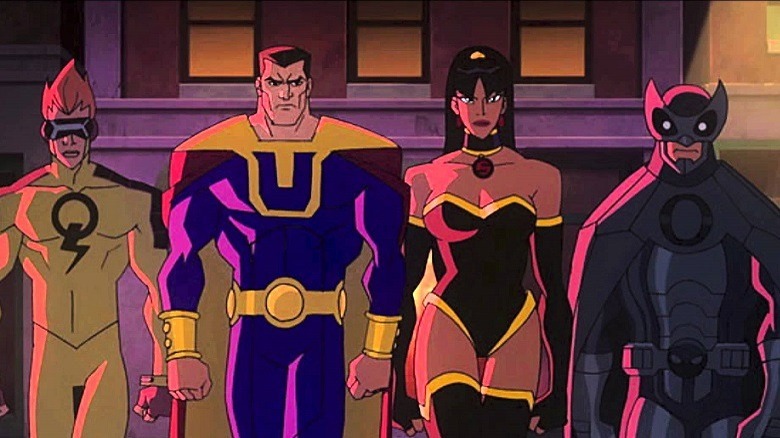
Despite the recent surge in popularity thanks to the "Loki" TV series and the upcoming movie "Doctor Strange in the Multiverse of Madness," Marvel wasn't the first of the big two to come up with the concept of a comic book multiverse. That honor goes to "The Flash" #123 (published in 1961), and DC continuity has only gotten more and more convoluted since -- despite numerous reboot attempts to clear up the whole quantum-entangled mess.
"Justice League: Crisis on Two Earths" envisions one such alternate DC Universe, where heroes are villains and vice versa. Lex Luthor escapes the grasp of the Crime Syndicate –- a twisted analogue of the Justice League -– to travel to our reality and our Earth. He teams up with an initially skeptical Justice League, and they travel across realities to confront the threat of the Syndicate.
Based loosely on Grant Morrison's and Frank Quitely's "JLA: Earth 2" graphic novel, there's a raft of entertainment to be had from seeing familiar characters given an evil spin -– much like in the mirror universe of "Star Trek." It would have been easy to have the entire plot descend into a massive brawl between characters and their counterparts, but there's a surprisingly deep thread about the nature of determinism and free will lurking within the realms of this packed story.
The Flashpoint Paradox
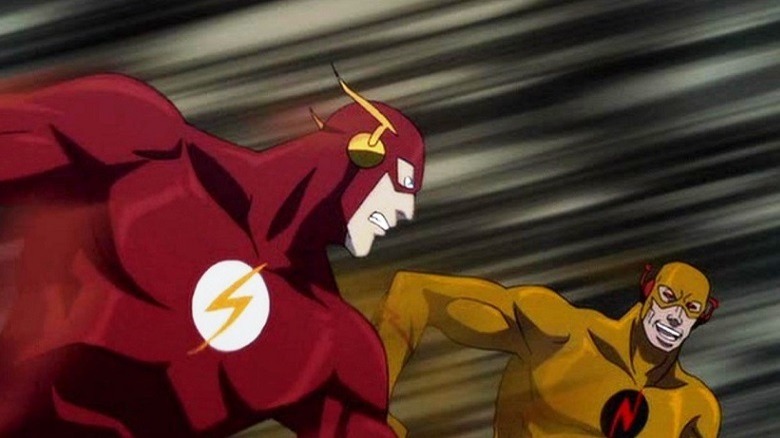
After Barry Allen, aka the Flash, uses his powers to travel back in time and save his mother from dying, he inadvertently alters the timeline in massive and disastrous ways. Trapped and powerless in this alternate reality, Barry has to team up with the dramatically altered heroes of this paradigm to try and restore reality.
An adaptation of the "Flashpoint" comic crossover from 2011, "The Flashpoint Paradox" is the first movie from the DC Animated Movie Universe (DCAMU) -- a reboot of the existing DC Animated Universe, designed to clear up years of muddy continuity. Elseworlds, the DC equivalent of Marvel's "What If...?," was always a fertile platform for storytelling, and this movie is effectively that concept stretched out to a feature-length film. In this universe Superman was captured at birth and held prisoner by the U.S. Government, and it was Bruce Wayne who was shot dead in Crime Alley -- leading his father, Thomas Wayne, to take up the mantle of a far more murderous and vengeful Batman.
Plot elements from "Flashpoint" will also feature heavily in the live-action "Flash" movie (starring Ezra Miller and Michael Keaton), and it's easy to understand the continuing popularity of this epic storyline.
Justice League: Doom
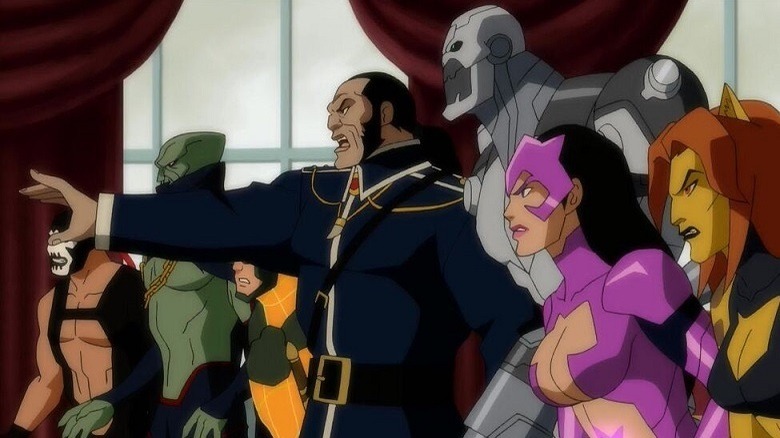
In a plot taken from the Mark Waid-penned JLA storyline "Tower of Babel," the Justice League find themselves under attack in the appropriately-titled "Justice League: Doom." While Batman is distracted by the theft of his parents' exhumed bodies, somebody acquires details of all of the weaknesses of Earth's superheroes in order to defeat them one by one. Loyalties will be stretched to their limit as the League falls into disarray from within.
"Justice League: Doom" is an excellent entry to the DC animated roster, with the singular drawback that the excellent first half is considerably more entertaining than the second, which falls into standard superhero fare. And whereas this particular comic storyline impacted the DC universe for some time to come, it's a little frustrating that there's effectively a reset button pressed at the end of the movie, minimizing its importance.
That said, the movie is fast-paced and features the welcome return of an entire roster of excellent and familiar voice talent. It's also an excellent way to honor Dwayne McDuffie, writer of nearly all the episodes from the "Justice League" animated series, who sadly passed away shortly after finishing his script for "Justice League: Doom." A word of warning, though: It's possibly a little too dark for younger viewers, featuring some brutal scenes of torture and prolonged violence.
Justice League: The New Frontier
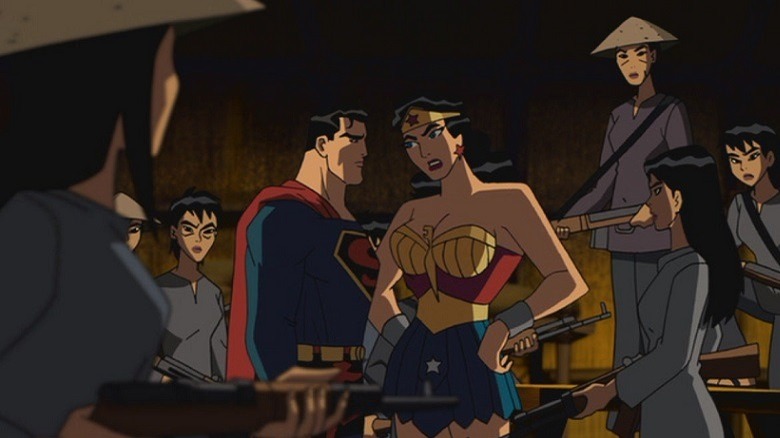
Writer, artist, and general renaissance man Darwyn Cooke released the 6-part limited comic series "DC: The New Frontier" in 2004 to critical acclaim, and DC released the animated adaption of the first volume 4 years later. Revolving around the birth of the Justice League in the face of an alien invasion, it's set during the interim between DC Comics' Golden and Silver ages. "Justice League: The New Frontier" is an origin tale of sorts, bringing together classic and lesser-known characters, all set against a backdrop of the 1950s and the end of the Korean War.
The sadly missed Cooke (lost to us in 2016) had a distinctive retro style, very much in the vein of the 1940s Fleischer Studios "Superman" cartoons: all square jaws and bold outlines. You can tell a Darwyn Cooke panel a mile away, and the movie goes some way to replicate that style. It's notable in DC output that the animation style varies considerably from movie to movie, and that can sometimes be a drawback -– but not here, where it's a triumph. Where DC movie adaptations can sometimes be an exercise in misery, "The New Frontier" is a tale of heroism and optimism.
Batman: Gotham Knight
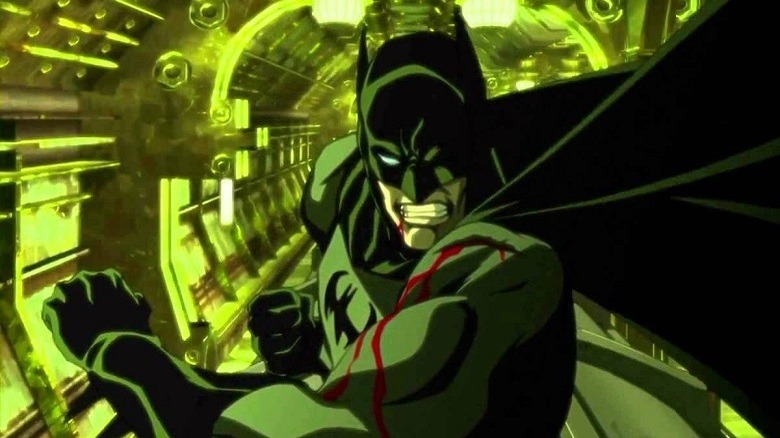
Similar in style to the exceptional "Animatrix" movie released in 2003, "Batman: Gotham Knight" is an animated anthology film. Revolving around Batman's ongoing struggle against the mob and his formidable rogues' gallery, all of the segments are set between the events of the live-action Christopher Nolan movies "Batman Begins" and "The Dark Knight," and each is produced by one of four Japanese Animation Studios.
The reliable Kevin Conroy (of "Batman: The Animated Series" fame) returns for gravelly voice duties, and each of the six segments is notably different in both scripting and artistic style. The anthology format works well; no segment is long enough to outstay its welcome, and it's interesting to see each of the studios take on the Dark Knight -– and for an animated property to be connected with a lucrative live-action franchise. Disney took a similar approach with "Star Wars: Visions" -- again, working heavily with Japanese anime studios -- and /Film's review says that the results "range from good to spectacular."
Superman: Red Son
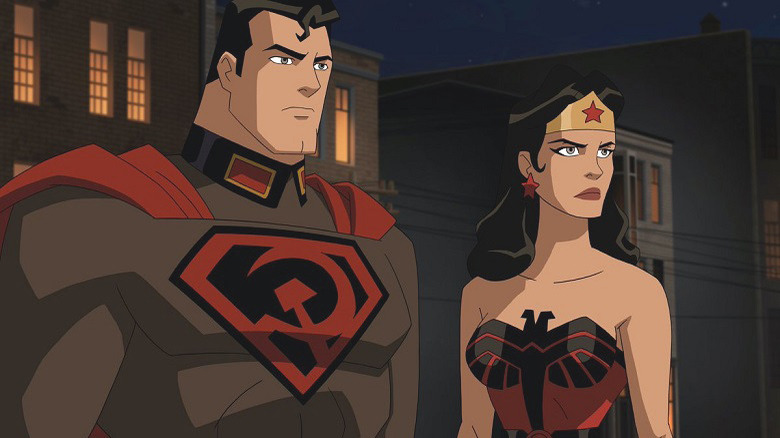
Based on the Mark Millar Elseworlds tale of the same name, "Superman: Red Son" poses an interesting question: What would have happened if Kal-El's Kryptonian rocket had landed in the USSR instead of Kansas? Set during the Cold War of the 1950s, "Red Son" sees Superman introduced to the world not as an American citizen, but as a loyal Soviet military asset. The "S" shield on his chest is replaced by the hammer and sickle, the Soviet symbol of proletarian solidarity.
The most entertaining elements of this surprisingly close adaptation are the side-effects of Superman's displacement from west to east. Batman is now a dissident, his parents killed by Stalin's police, and Lex Luthor is a benevolent super-genius in service of the American flag. The plot centers around the cost of loyalty, and -– despite some sadly missed elements from the source material –- it's one of the most entertaining and original films that DC has produced.
Batman: Mask Of The Phantasm
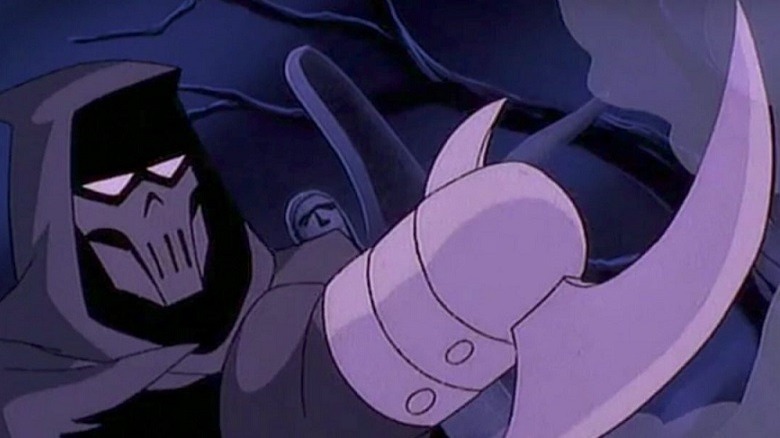
"Batman: The Animated Series" was a huge success in the '90s and arguably responsible for the entirety of DC's animated output. Without it there would have been no "Superman: The Animated Series" and no "Justice League." Sharing the distinctive Danny Elfman theme from the live-action movies, "Batman: The Animated Series" ran from 1992 to 1995, and "Batman: Mask of the Phantasm" was the first DC animated theatrical release, brought out at the height of the TV show's success.
In "Mask of the Phantasm," Gotham's biggest gangsters are being killed by a new nocturnal vigilante, and Batman is framed for murders he didn't commit. In trying to clear his name, Bruce learns that the gangsters are connected –- and also learns the awful truth about their murderer. The TV series was always a triumph of design, and the art deco stylings of Gotham have never looked better than on the big screen, in this loose adaptation of the comic series "Batman: Year Two."
The film never quite hit the giddy success of its Emmy award-winning TV counterpart, but it's a bold example of how to do a movie adaptation. It feels suitably epic, never just like an elongated episode of the series, and presents a multi-layered tale of tragedy and betrayal.
Batman Beyond: Return Of The Joker (Original Uncut Version)
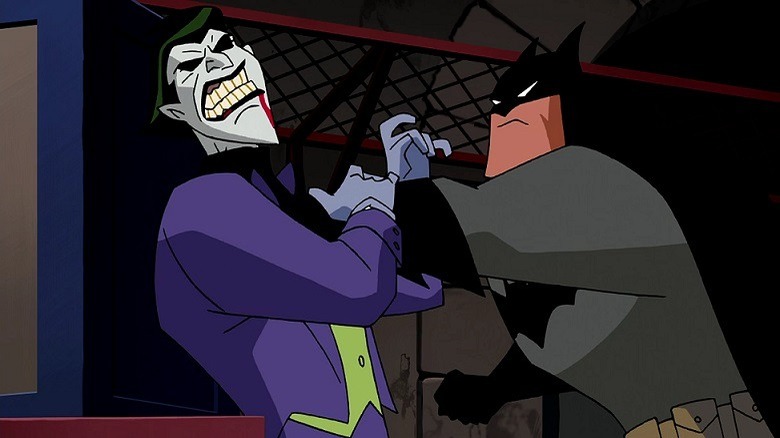
The "Batman Beyond" TV series ran for three seasons from 1999, telling the story of a new Batman –- teenager Terry McGinnis –- operating in 2039 Neo-Gotham under the guidance of a retired Bruce Wayne, with the "Dark Deco" stylings of the animated series replaced by cyberpunk locales and lurid neon.
In "Batman Beyond: Return of the Joker," the first full-length movie based on the series, the Joker -- thought long dead –- has re-emerged to lead The Jokerz, the gang that he was the inspiration for. Terry learns of the events of the last fateful encounter between his mentor and the Clown Prince of Crime, and it's up to this next generation's Batman to defeat the Joker's menace forever.
Mark Hamill was perfectly cast as the Jester of Genocide, and, despite some slightly contrived reasoning, it's a delight to hear him spar off against Kevin Conroy's Bruce Wayne again. This movie is the closest we came to a crossover between the present and future Batmen and sees the welcome return of a few familiar faces. The uncut version is the recommended one, though, upgrading it from a PG certificate to a PG-13.
Constantine: City Of Demons
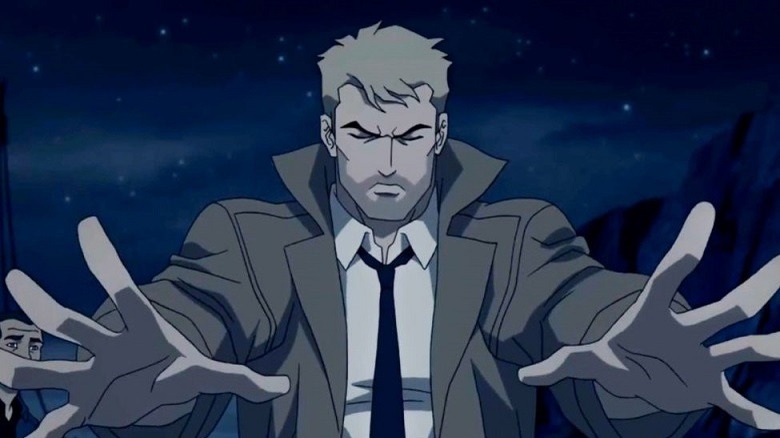
Based on Mike Carey's graphic novel "All His Engines," "Constantine: City of Demons" is a familiar plot for John Constantine fans, having already been loosely adapted for the ill-fated TV series in the episode "Quid Pro Quo." When Tricia, the daughter of Constantine's best friend Chas, falls into a supernatural coma, John sets out to cure her. It's a quest that'll take him through the seedy underbelly of Los Angeles and force the unlikeliest of alliances –- as well as a confrontation with his nemesis.
Matt Ryan once again proves how perfectly cast he was in the role of beleaguered warlock John Constantine. Eventually the character would end up being heavily diluted by (too many) regular appearances in the TV series "Legends of Tomorrow," but this and "Justice League: Dark" are a perfect showcase for both the character and Ryan's portrayal of him. Suitably violent and profane, just as a Constantine tale should be, "City of Demons" serves as an ideal continuation for the short-lived TV show.
Superman Vs. The Elite
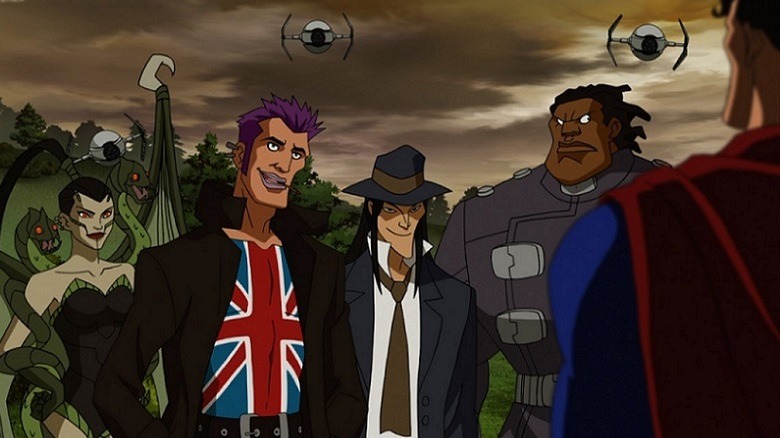
Created as the response to Wildstorm Comics' popular ongoing title "The Authority," "The Elite" were introduced into the world of comics in 2001 in "Action Comics" #775. A team of superpowered antiheroes, this squad –- led by enigmatic telekinetic skinhead Manchester Black –- were posited as the antithesis to the Man of Steel: reckless, aggressive, and with little concern for collateral damage to bystanders or property.
In "Superman vs. The Elite," the rogue vigilantes prove themselves capable of killing to achieve their aims -- a decision which leads them into a direct confrontation with Superman. Yet in a world where even the people in authority turn a blind eye to the Elite's nefarious activities, what chance does truth, justice, and the American way have?
It's a story of surprising depth for a tale that ultimately culminates with super-powered beings knocking each other into next week (or, in Superman's case, the week after that) and which questions the core values of many of DC's core heroes -– why not use their powers to fix the world? It's a valid question, and one that will be addressed again in the DC animated movie "Injustice."
Teen Titans GO! To The Movies
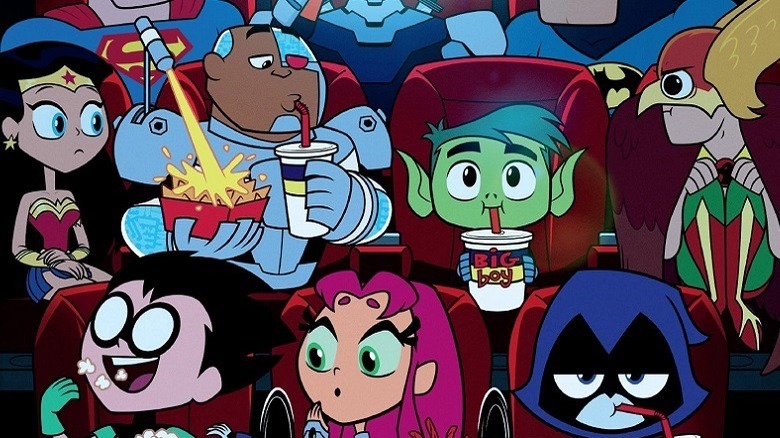
There's a lot of hatred for "Teen Titans GO!," with many seeing it as too frivolous or having doomed other animated projects involving DC's teenage super-team. The long-running television series is certainly an acquired taste: deliberately silly, noisy, and raucous, with a very distinctive "Powerpuff Girls" style of animation. That said, "Teen Titans GO! to the Movies" is a triumph.
It's a brilliantly unsubtle satire of superhero movies, of studios mining even the most obscure and minor properties to make a profit. Annoyed that every other superhero is getting their own film, the Teen Titans head to Hollywood -- where they realize that only by destroying all the other heroes can they make their dreams come true.
It's laugh-out-loud funny, pitched with just the right level of mockery towards beloved characters, and is filled with some excellent songs. It also features the greatest Stan Lee cameo ever put to screen.
Read this next: Upcoming DC Animated Movies To Keep On Your Radar
The post The 15 DC Animated Movies You Need To Watch appeared first on /Film.
from /Film https://ift.tt/3u7aRf9
No comments: